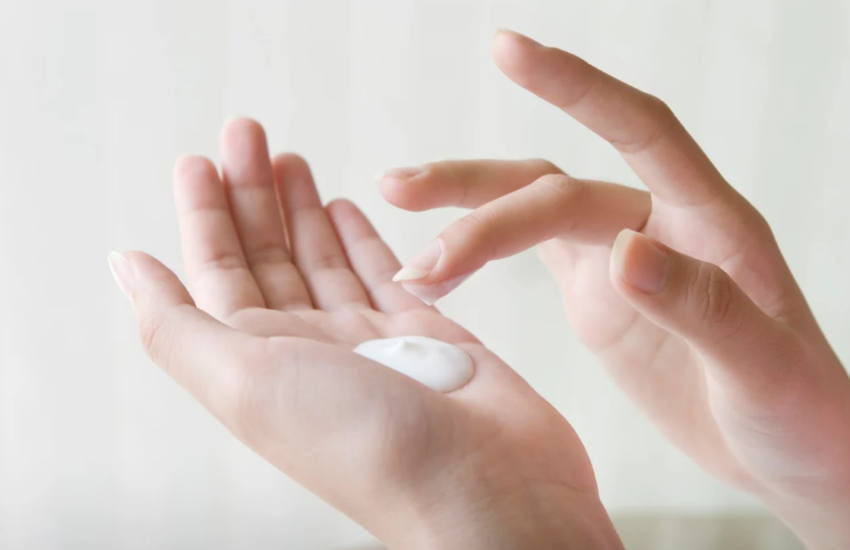Choosing the right lotion base is essential for homemade beauty products. It’s the foundation for add-ins like essential oils, active ingredients, botanicals, and more. Whether you’re crafting a simple moisturizer or an elaborate anti-aging cream, it’s important to get the right base.
This post will help you choose the best lotion base for your homemade beauty products.
What Is a Lotion Base?
A lotion base is a combination of oils, water, and emulsifiers. It creates the structural foundation of lotions and creams. The base is formulated to be easily absorbed into the skin to deliver moisture and nutrients. It can come in different viscosities, from light and fluid to thick and buttery, depending on the intended use.
The Importance of Choosing the Right Lotion Base
Your choice of body lotion base impacts the feel and absorption rate of your product, as well as the stability and shelf life. A good base should emulsify oil and water properly, preserve the active substances you choose to add, and remain stable under various conditions. The right base caters to specific skin types and concerns, offering therapeutic benefits while minimizing the risk of irritation.
Identifying Your Skin Type and Needs
Before selecting a base, identify your skin type and any particular needs you wish to address. Below is a quick rundown:
- Normal Skin: This type is not too oily or dry and can handle a wide range of ingredients.
- Dry Skin: Requires a base with higher oil content for deep moisturization.
- Oily Skin: Benefits from a water-based, non-comedogenic, or light oil base that moisturizes without clogging pores.
- Combination Skin: May need a balance between oil and water content to address dryness in some areas and oiliness in others.
- Sensitive Skin: Should opt for a base with minimal, gentle ingredients to reduce the risk of irritation.
- Mature Skin: May benefit from bases that include ingredients with anti-aging properties, such as antioxidants.
Understanding Body Lotion Base Ingredients
When choosing your base, pay close attention to the ingredients list. Some common components found in body lotion bases are:
- Oils and Butters: Jojoba oil, shea butter, cocoa butter, and coconut oil are popular for their nourishing properties.
- Emulsifiers: Examples such as stearic acid or emulsifying wax help blend oil and water.
- Humectants: Glycerin, aloe vera, and hyaluronic acid attract moisture to the skin.
- Preservatives: Necessary to prevent bacterial growth, especially in water-based products.
- Additives: These can be active ingredients like vitamins, plant extracts, or fragrances.
Selecting a Base for Different Skin Types
Below are some recommendations for body lotion bases based on skin types:
- For Dry Skin: Choose a creamier base with rich emollients like shea butter or cocoa butter.
- For Oily Skin: Look for a gel-like base or aloe vera-based products that offer hydration without heaviness.
- For Combination Skin: Go for a versatile medium-weight base that can be adjusted with more oil or water as needed.
- For Sensitive Skin: A minimal ingredient base, free from fragrances and potential allergens, is best.
- For Mature Skin: A base with hyaluronic acid or peptides can offer anti-aging benefits.
Tailoring Your Lotion Base with Additives
Once you’ve chosen your base, consider how you can customize it. You can add ingredients that tailor your lotion to your needs. For example:
- Essential Oils: For fragrance and therapeutic properties, but always use them with a carrier oil and be mindful of dermal limits.
- Active Ingredients: For addressing specific concerns, like tea tree oil for acne.
- Natural Extracts: Such as green tea or chamomile, which can soothe and protect the skin.
- Colorants: If desired, these should be skin-safe and used sparingly.
Crafting the Perfect Texture
The texture of your lotion is another important factor. You can adjust the thickness of your lotion by varying the concentration of the emulsifying agent. For a thicker cream, increase the proportion of butters and oils. For a lighter lotion, increase the water phase. Experiment with small batches until you achieve your desired consistency.
Storage and Preservation
Understanding the basics of storage and preservation is essential when making your own skincare products. Most DIY lotions will require a preservative to prevent mold and bacterial growth. Choose a preservative that’s effective against a broad spectrum of microbes and compatible with your base. Store your products in a cool, dark place, and consider using airless pumps or jars to minimize contamination.
Conclusion
Choosing the right lotion base for your DIY skincare means you can tailor your homemade beauty products. You can buy lotion base wholesale or retail, depending on your needs. Purchasing lotion base wholesale generally offers better value for money, especially if you’re buying in bulk.

